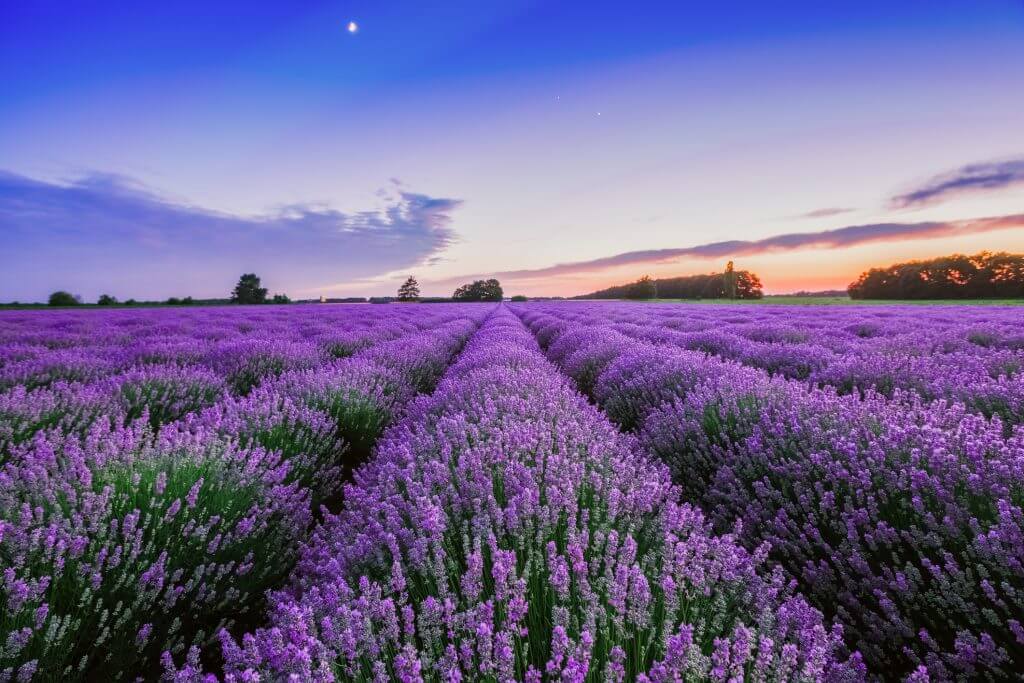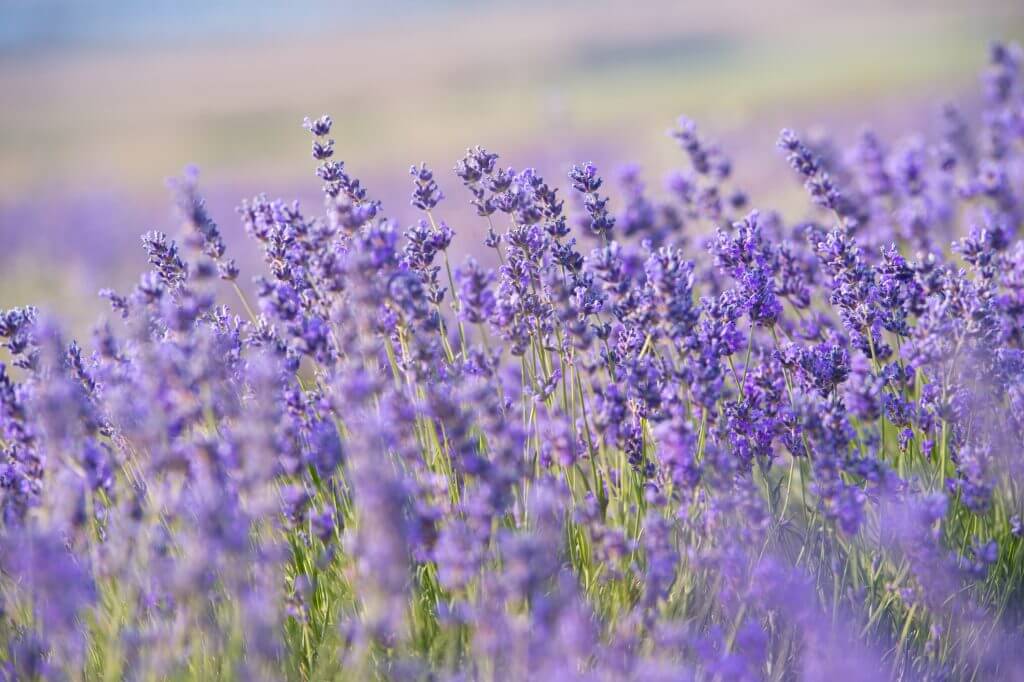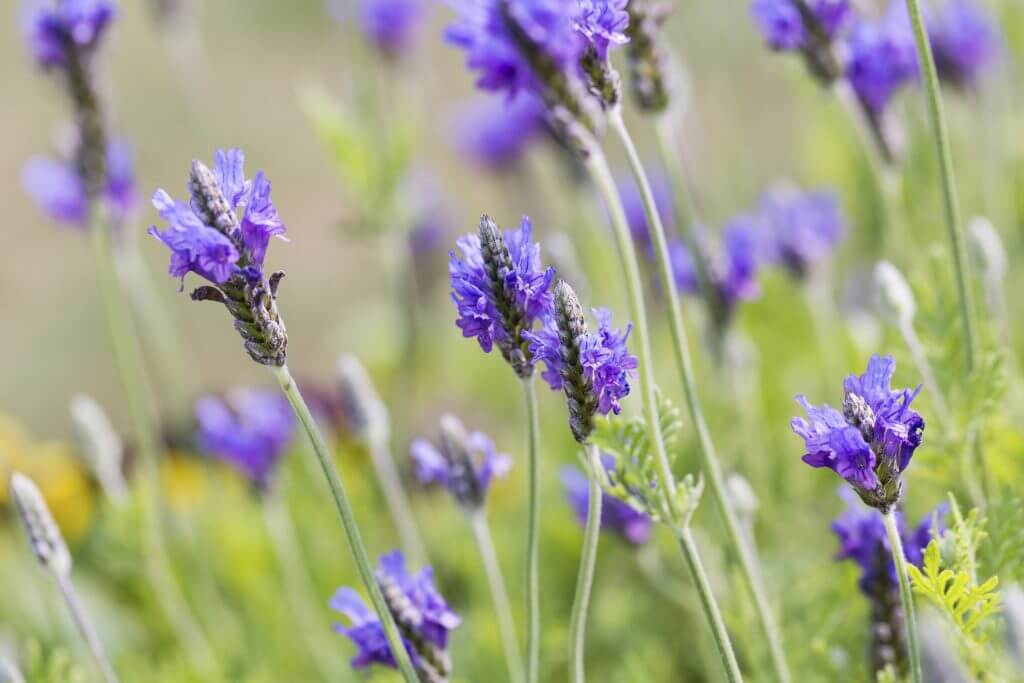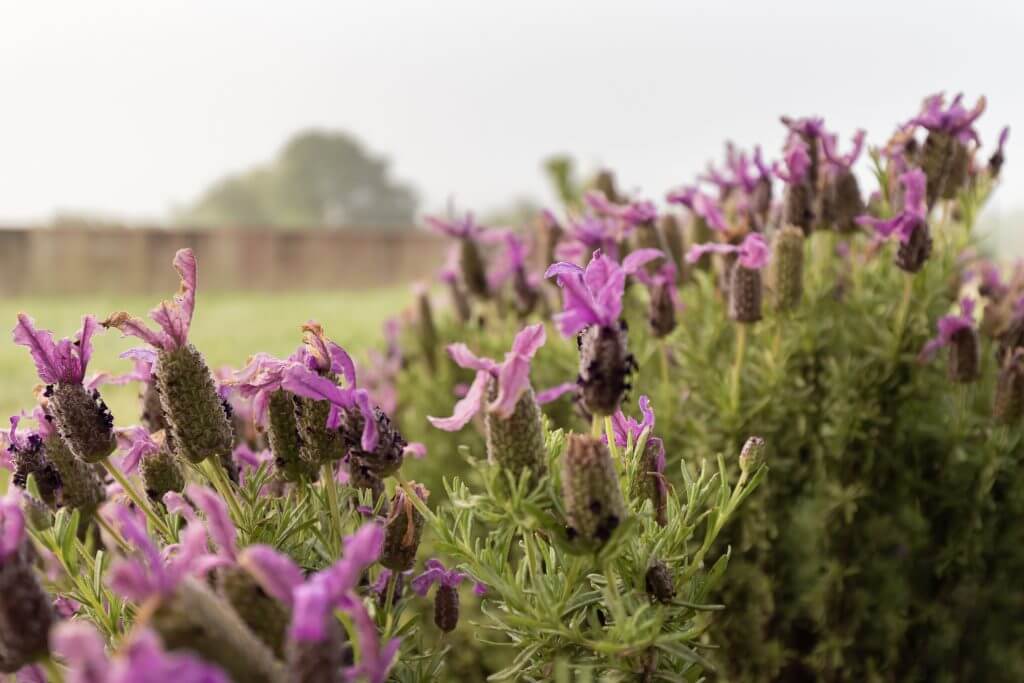Lavenders have been popular for their culinary and apothecarial uses. In addition to that, they add such beauty to the surroundings as they show their vibrant colours when they bloom.
This fragrant herb garden staple is easy to propagate and care for, making this low maintenance plant an excellent addition to your surroundings.

The Basics of Lavender
Lavender refers to the genus Lavandula which is comprised of 47 known species.
This flowering herb belongs to the mint family Lamiaceae and native to Africa, Europe, and Asia.
Most lavenders are cultivated as ornamental plants, for culinary uses, and even for the extraction of essential oils.
The most popular of all lavender species for cultivation is the Lavandula angustifolia.
Other popular ornamental lavender species are L. multifida, L. dentata, and L. stoechas.
Lavandula angustifolia
Also known as English lavender, true lavender, common lavender, or garden lavender.
This lavender specie is a very aromatic shrub that can grow to about 3.3 to 6.6 feet (1 to 2 metres) high.
Its leaves are about 0.75 to 2.5 inches (2 to 6 cm) long and 0.1 to 0.25 inches (0.25 to 0.6 cm) wide.
The colour lavender usually refers to the flowers of this specie which is purplish-pink. The blooms grow from spikes of about 0.8 to 3.1 inches (2 to 8 cm) long, shooting out from leafless stems of about 4 to 12 inches (10 to 30 cm) long.


Lavandula multifida
Also known as Egyptian lavender or fernleaf lavender
This small plant or shrub is native to the southern Mediterranean regions, which include Sicily, Iberia, and the Canary Islands.
The fernleaf lavender is grown either as a herb or an ornamental plant, or both.
The Egyptian lavender’s stems are woolly and grey. The blooms of this plant are blue-violet or dark blue, which grow from long stems.


Lavandula dentata
Also known as French lavender or fringed lavender.
French lavender is native to the Atlantic islands, the Mediterranean, and the Arabian peninsula.
This lavender specie is intensely aromatic, from its blooms to the leaves, giving off that typical lavender aroma, making it popular for use in essential oils and perfumes.
The fringed lavender grows to about 24 inches (60 cm) tall, and its grey-green leaves are lightly woolly in texture, lance-shaped or linear with toothed edges.
This lavender has purple flowers with pale violet bracts, and bloom in late spring.


Lavandula stoechas
Also known as topped lavender or Spanish lavender (also sometimes as French lavender).
Topped lavender is a native to the Mediterranean, specifically Spain, France, Portugal, Greece, and Italy.
This evergreen shrub grows to about 12 to 40 inches (30 to 100 cm) tall. Some plants could grow to about 6.5 feet (2 metres).
The Spanish lavender’s greyish leaves are woolly and grow to about 0.4 to 1.5 inches (1 to 4 cm) long.
The topped lavender is referred to as such because of the purple elongated ovoid bracts crowning (or topping) its inflorescence. These bracts, which are usually bright lavender purple or (very rarely) white, can grow to about 2 inches (5 cm).
You can expect the Spanish lavender to bloom in spring up to early summer.


Planting Your Lavender
Lavenders usually grow in temperate climates, where temperatures are above 26 °F (-3 °C) and below 64.4 °F (18 °C) during the coldest seasons.
Choose the right lavender for your climate conditions.
English lavenders are best for cooler climates, while French and Spanish lavender varieties thrive in warmer and more humid conditions.
Lavenders can be grown from seeds or healthy grown plants from nurseries.
Choose a location with full sun. They love the hot sun and dry soil.
Use a well-draining rich soil for your lavender plant. If your soil is not as well-draining, add sand or gravel before planting.
Make sure to allow spaces between lavender plants to allow for air circulation.
Water consistently until the lavender plants are established.
Caring for Your Lavender
Lavenders are usually low-maintenance once established.
They do need to be pruned back each spring. Prune back to about half its current height when the plant matures. This will encourage new growth and promote more robust flowering.
If you live in a more humid environment, consider using stones or rocks to top your lavender’s base instead of mulch. Mulch holds more moisture and may not be beneficial to your lavender if there is too much.
Common Problems with Lavender
If you notice that your lavender was thriving and then suddenly seems to be struggling, consider checking the soil’s pH. Lavenders do not like acidic soil. You can amend your soil to increase its pH conducive to your lavender’s growth.
Overwatering will cause root rot on your lavender. Give them a long soak less frequently, instead of short and frequent watering.
Leggy lavenders mean that they are not pruned enough. Prune each spring to encourage bushier growth.
As for pests and diseases, the lavender attracts pests such as garden flea hopper, four-lined bug, and Septoria leaves spot. Sometimes pests such as spittlebug, leafhoppers, tarnished plant bug, and woolly bear caterpillars can also become an issue. Use the appropriate insecticide to address pest issues on your lavender plants.
[elementor-template id=”4604″]
[elementor-template id=”6387″]
